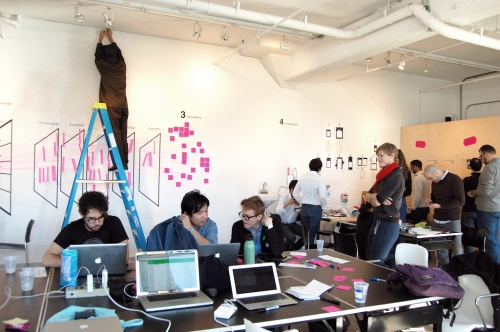Elsewhere, a ‘living museum’ in Greensboro, NC was given a grant through the Federal Reinvestment and Recovery Act to install a solar PV array on their roof, as I’ve mentioned in previous posts. In order to use the array as an educational tool as well as an energy source, Elsewhere asked me to serve as a ‘Solar Fellow,’ to devise a system allowing the public to experience the solar array.
As I met members of the local community and chatted about solar energy, I made an observation that guided the project. Low income Americans generally don’t have access to distributed photovoltaic solar energy, due to the virtually prohibitive up front equipment and installation costs, not to mention the luxury of owning the roof atop your home. On the other hand, in many developing countries, PV solar arrays are shared by villages or small groups to distribute the costs. Admittedly, families in developing nations are using a fraction of the energy that an American family uses. What are the benefits of instating a shared solar station in a US city, if satiating energy needs is not the main goal?
I proposed to set up an experimental Solar Energy Commons in Elsewhere’s facade, an opportunity for community members to use some of the energy from Elsewhere’s grid. Like other commons throughout history, basic guidelines for use were necessary to keep the Energy Commons functional. After discussing with artists and curators at Elsewhere, we decided to set a provision that all use of the Energy Commons should in some way benefit the community. (This is a subjective guideline to be sure, but suitable for an experiment.)
The Energy Commons unit is a hatch mounted in a rebuilt door, which opens to reveal a singular power outlet, a small table and a canopy. A pamphlet (currently in development) explains the experiment and guidelines to interested visitors, and solicits responses to the idea. In the opening weeks, locals used the Solar Commons to bring people together for activities such as dance tutorials and impromptu karaoke sessions. Through these experimental interactions with solar energy, we hope to capture peoples’ perceptions on solar energy and what it means to share energy in a developed nation.














